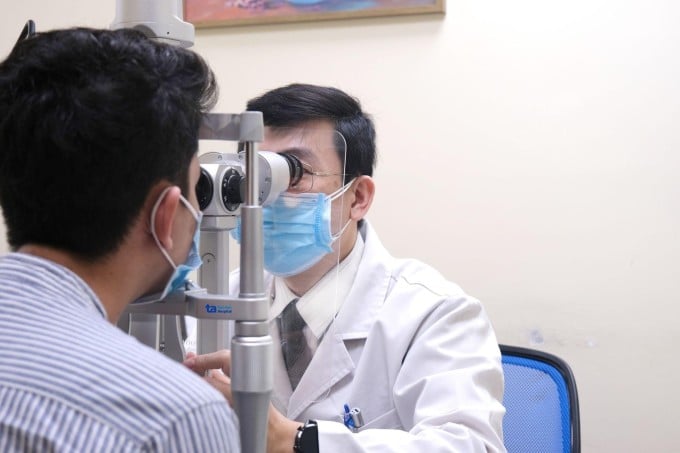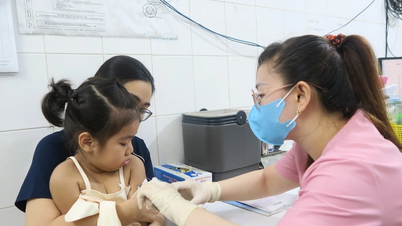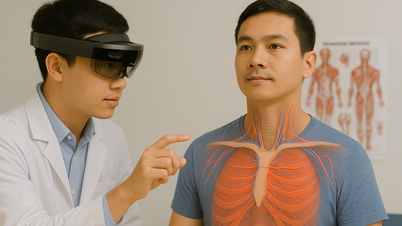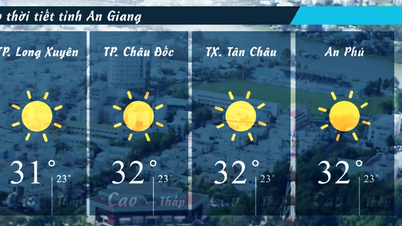Prolonged high blood sugar in diabetics can easily lead to nerve and blood vessel damage in the eyes, reducing vision and possibly leading to blindness.
Master, Doctor Pham Huy Vu Tung, Ophthalmology specialist, Tam Anh General Hospital, Ho Chi Minh City, said that diabetics who do not control their blood sugar well are prone to eye complications. This condition also occurs in pre-diabetic patients. Some common eye complications include diabetic retinopathy, diabetic macular edema, cataracts, glaucoma...
High blood sugar changes the amount of fluid in the eye, causing swelling in the tissues in the eye. These conditions are temporary and go away when blood sugar levels return to normal.
If blood sugar levels are high for a long time, the small blood vessels at the back of the eye are easily damaged. New blood vessels develop, but they are weaker and tend to flow into the middle of the eye, leading to scarring or dangerously high pressure on the eye. Most diabetic eye diseases have a vascular origin.
According to Dr. Tung, damage can begin in the pre-diabetic period (a condition in which blood sugar is higher than normal but not high enough for a doctor to diagnose type 2 diabetes). Diabetics with factors such as high cholesterol, smoking, high blood pressure... are more susceptible to eye diseases.

Doctor Tung examines a patient's eyes. Photo: Dinh Tien
Below are four common eye diseases caused by diabetes.
Diabetic retinopathy : The retina is the innermost layer of the eyeball. The retina senses light and sends signals to the brain to decode so we can see. Damaged blood vessels in the retina cause diabetic retinopathy. Diabetic retinopathy is a common cause of vision loss.
Macular edema : The macula is the part of the retina at the back of the eye that helps you see color and detail. Diabetes can cause the macula to swell (macular edema). Over time, macular edema can cause partial vision loss or blindness.
Glaucoma : Occurs when increased pressure within the eye damages the optic nerve, the bundle of nerves that connects the eye to the brain. Diabetes doubles the risk of glaucoma, which can lead to vision loss or blindness.
Cataracts: The lens is a clear structure that helps the eye see objects more clearly. The lens tends to become cloudy as you age. High blood sugar causes deposits to build up in the lens, increasing your risk of developing the disease.
When experiencing vision problems due to high blood sugar, the patient may have symptoms including blurred vision, wavy vision, dark vision, poor color vision, foggy vision, flashing lights, and loss of vision.
Dr. Tung added that good blood sugar control is the best way to prevent diabetic eye disease. Target blood sugar is different for each person, but in general, the HbA1c index (average blood sugar over three months) should be below 7%.
Dr. Tung recommends that patients should follow the treatment prescribed by the Endocrinologist - Diabetologist, monitor blood sugar and have regular check-ups. Have an eye exam every year for 5 years from the time of diagnosis of type 1 diabetes. People with type 2 diabetes should have an eye exam immediately after diagnosis and have their eyes checked at least once a year. Women with diabetes should have an eye exam before pregnancy or during the first three months of pregnancy, and have regular eye exams until one year after giving birth.
Dinh Tien
| Readers ask questions about diabetes here for doctors to answer |
Source link



































































































Comment (0)